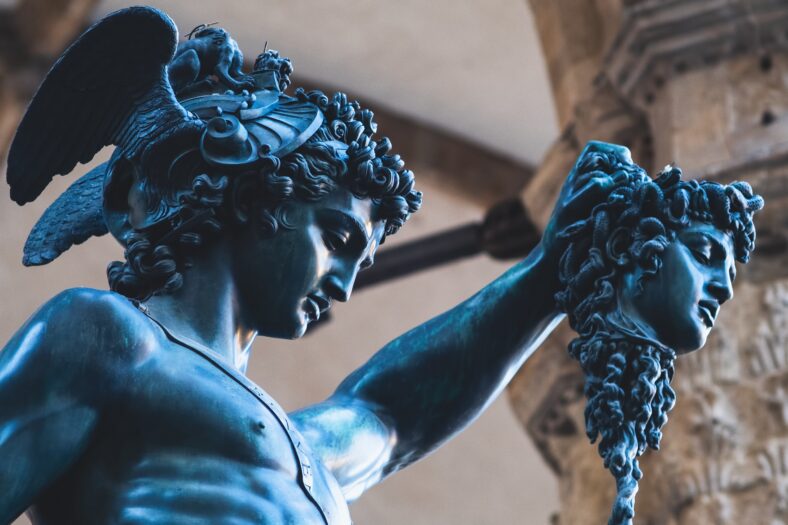An Ancient Mold Used To Create Medusa Masks Was Found On The Island Of Sicily, And It’s From The 1st Century B.C.E.

While exploring the ruins of Finziade, the last Greek colony on the island of Sicily, archaeologists discovered a mold that was used to create masks in the likeness of the mythological Gorgon Medusa during the 1st century B.C.E.
The mold was found in a structure called House 18, which was originally built in the 2nd century B.C.E. Later, the residence was converted to an artisan workshop.
It was an excellent example of how residential buildings were repurposed during a time of significant economic growth for the Roman Republic.
Other mask molds at the site suggest that the manufacture of theater masks was important to the local economy, providing new insight into the aspects of daily life in Roman Sicily.
The ancient mask mold was identified as a depiction of Medusa. In mythology, Medusa was a Gorgon, a monstrous creature with snakes for hair and a gaze that could turn anyone to stone. Medusa’s backstory is one of tragedy.
She was originally a beautiful mortal woman but was transformed into a monster as punishment by the goddess Athena after being violated by Poseidon in Athena’s temple.
Through no fault of her own, Medusa was cursed with a hideous appearance and the power to petrify anyone who laid eyes upon her.
Medusa was finally defeated when the hero Perseus used winged sandals, a cap of invisibility, a reflective shield gifted to him by Athena, and a curved sword to dodge Medusa’s gaze and chop her head off. The winged horse, Pegasus, and the golden giant, Chrysaor, sprang forth from her severed neck.
Although Medusa was often seen as a dangerous monster, she was also considered to be a symbol of protection. Her head appeared on coins, shields, armor, and other objects to ward off evil.

Sign up for Chip Chick’s newsletter and get stories like this delivered to your inbox.
The various molds found in House 18, including the Medusa mold, illustrate how the culture of ancient Sicily became a blend of Greek, Roman, and local influences.
“Of all foreign nations, Sicily was the first who joined herself to the friendship and alliance of the Roman people,” wrote the historian and philosopher Cicero.
“She was the first to be called a province; and the provinces are a great ornament to the empire. She was the first who taught our ancestors how glorious a thing it was to rule over foreign nations.”
Sicily was an ancient Greek colony dating back to the 8th century B.C.E., so it was naturally influenced by Greek culture. Never before had ancient cultures collided together as they did in Sicily. During the Punic Wars in the 3rd century B.C.E., the Romans took control of Sicily, adding aspects of their own culture.
The island was managed by Roman governors, but many Greek traditions still remained. The Greek language continued to be widely spoken, even as Roman customs were introduced. Overall, the Medusa mold represents Sicily’s unique status as a cultural melting pot.
More About:News





